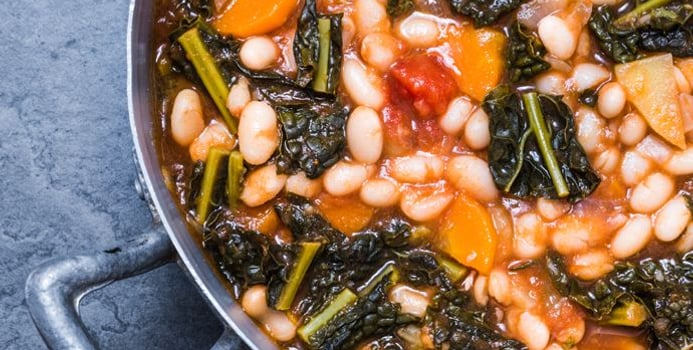
Calisthenics is the name given to repetitive exercises that use the resistance of your own body to build strength, increase flexibility and burn fat. No equipment or weights are used in calisthenics, and the exercisescan be performed anywhere there is a floor and enough space to move in. The benefits of calisthenics effects are wide-reaching.
Increased Muscle and Tone
Calisthenics are one of the only ways to build muscle mass and strength without the use of weights. However, it might not be the choice for the hard-core body builder. Muscles are built on the principle of progressive resistance. You can only progress your resistance so far when your only weight is your own body. However, calisthenics can build a reasonable amount of muscle mass, and maintain it, especially for a beginner looking for moderate muscle growth. An added benefit is that calisthenics accomplishes this muscle growth without the tearing and trauma that weight training can inflict.
Flexibility
When you get stronger, you also become more flexible. In fact, you cannot become more flexible without building muscle strength. A strong muscles does not have to strain to contract as a weak one must to perform. This in turn allows muscles to extend and flex with more ease. Calisthenics is an ideal way to increase flexibility through muscle tone.
Weight Loss
Calisthenics tackle the problem of burning excess fat from two directions. First, the strength training builds muscle mass and tone all over your body. Increased muscle mass raises your resting metabolic rate, allowing you to burn more calories every moment of every day. Second, continuous calisthenics causes your heart rate to rise. It constitutes aerobic exercise, one of the most effective ways possible to burn off fat.
Endurance
One of the most beneficial effects of calisthenics is increased endurance. Circuit training calisthenics requires you to do as many repetitions of an exercise as possible, without rest, until fatigued. Every day that you re-perform these exercises, having allowed your muscles to heal overnight, your endurance will be increased. You will be able to perform more repetitions before fatigue is reached. When performed evenly within all muscle groups, the result is increased endurance throughout every part of the body, including the cardio-vascular system.
Calisthenics can improve multiple aspects of your physicality. It is an excellent exercise for over-all fitness and health. No matter what your physical goals, calisthenics are worth consideration while achieving them.
3 Kale Recipes That Aren't Salads
Wondering how to serve kale? Wonder no more. These recipes are delicious and packed full of nutrients. Sure to please even the pickiest of eaters.

Kale is one of the best foods that you can consume but yet, one that is often getting left out. Many people think that the only way to serve it is in a salad, however, this is incorrect. Kale makes a great addition to many different dishes, either as the star ingredient or simply as one of many ingredients that will help make your meal taste delicious.
Kale is loaded with antioxidants, rich in so many vitamins and minerals it can practically be considered a multi-vitamin on its own and is low in calories but high in fiber. Is it any wonder this is considered to be a superfood?
To get you started, here are three great recipes that all feature this all-star vegetable.
Hearty Kale Soup
This kale soup recipe is sure to keep your appetite satisfied and your cholesterol levels low thanks to the beans that it contains. Make a big batch and serve it throughout the week.
- 2 tbsp. olive oil
- 1 onion, finely diced
- 2 cloves garlic, minced
- 1 bunch kale, stems removed and finely chopped
- 8 cups low sodium chicken broth
- 15 oz. can diced tomatoes
- 2 sweet potatoes, cut into chunks
- 30 oz. cannellini beans, drained and rinsed
- 1 tbsp. Italian seasoning
- Salt and pepper to taste
Heat the olive oil in a skillet over medium heat. Add the onion, kale, and garlic and sauté until onion is fragrant and kale is soft. Add the remaining ingredients and then cook on medium for about 20 minutes or until you can easily pierce the potato with a fork. Serve immediately.
Easy Sautéed Kale
Sometimes you just want to serve kale as a simple side dish. During those times this recipe will fit the bill perfectly. The kale will soften up but won’t shrink down quite like spinach does, so this makes for a more attractive cooked side dish option.
- 2 cups kale, chopped
- 2 tbsp. sesame oil
- 2 cloves garlic, minced
- ½ cup low sodium vegetable broth
- Salt and pepper to taste
Heat the sesame oil in a skillet over medium heat. Add the garlic and cook for 30 seconds or so. Add the kale and continue to cook for 1-2 minutes. Stir in the vegetable broth and continue to cook until the broth has evaporated. Add salt and pepper and then serve.
Scrambled Eggs With Kale
If you are looking for a way to liven up your breakfast, this scrambled egg recipe will certainly do the trick. Loaded with protein, antioxidants and some healthy fats, it’s a great way to begin your day.
- 1 tbsp. olive oil
- ¼ cup finely diced onion
- 1 clove garlic, minced
- 1 cup finely chopped kale
- 2 eggs, beaten
- 1 cup egg whites, mixed with eggs
- ½ cup low-fat mozzarella cheese
- ½ tsp. each oregano and basil
- salt and pepper to taste
Heat the olive oil in a skillet on medium heat. Add the onion and garlic and cook for 30-60 seconds. Add the kale and cook for another minute or two until kale has softened. Lower the heat to medium and pour in the egg mixture. On top of this, sprinkle in the cheese and seasoning. Stir until the cheese is melted and eggs are fully cooked through. Sprinkle with salt and pepper and then serve.
So don’t let yourself leave kale in the dust any longer. It’s really one of the best vegetables that you should consider adding to your diet plan.
[Image via Shutterstock]
The Three Piece Workout That'll Challenge Your Whole Body
Three pieces of equipment — that's all you need for a challenging full-body workout.

This workout is designed to be done as a circuit. Go from one exercise to the next with little to no rest. You can choose to do this by repetitions, or make it easy and set a timer. Go through the circuit one to three times, making any adjustments you desire.
Med Ball Pushups
You can do this one of two ways: keep medicine ball stationary under one hand then switch on next set, or roll the ball gently back and forth from hand to hand for each rep. Keep your core tight and body straight. You can do these from your knees or your toes, depending on your ability level.
Squat Throw
Hold the med ball at chest height in both hands. Feet are slightly wider than shoulder-width with toes forward or angled slightly out. Squat down and as you come up throw the ball straight up in the air. Catch it as you go down in another squat.
Jump Rope
As fast or slow as you want to.
Bent Over Row
Place band under your feet and stand hip-width apart. You can wrap it around more than once to increase tension. Keep knees slightly bent and hinge forward at your hips. Holding one end of the band in each hand, bend your elbows and draw them up towards the ceiling — squeezing your shoulder blades together as you lift. Let your arms straighten back down for one complete rep.
Alternating Side Lunges
Hold the med ball at chest height and stand up straight with your feet next to each other. Step out wide to the side with your right leg. Keep your left leg straight as you bend at your right knee and hip, lowering your butt towards the floor as your torso leans forward to maintain balance. Press up back together, and step to the left.
Side Jumps Over Rope
Lay the rope out on the floor in a straight line. Stand so your right side faces the rope and jump over to the right with both feet. Go as quickly as you can side to side over the rope.
Band Shoulder Press
Place the band securely under your feet holding a handle in each hand. Bend your elbows and bring your hands up by your shoulders, palms facing forward. Press up overhead bringing your hands together as your arms straighten. Lower back down to the start position for one complete rep.
Walking Lunge and Twist
Hold the ball at chest height. You can keep it close to your body to make it less challenging, or straighten your arms parallel to the floor for more of a challenge. Step forward with your right leg and as you lunge down twist your body to the right as far as you can in a controlled manner. Push up and as you come up bring your torso back to center. Step through with your left foot and twist to the left.
Forward Jump and Back over Rope
Place the rope straight on the floor. Facing the rope, hop forward and back over the rope.
[Image via Shutterstock]
There's a Psychological Complex Caused by Selfies, Apparently

In the last few years, it’s become incredibly popular to take selfies and post them to social media, in fact, it seems that some people even spend more time taking photos than being present and enjoying their surroundings. In 2018, this practice of taking photos of yourself has become almost normal and acceptable, with selfie sticks being sold left, right, and center, and celebs like Kim Kardashian turning the simple selfie into a money making venture (she compiled a bunch of her selfies into a book titled, Selfish). However, it turns out that taking multiple selfies is not just narcissistic, but in some cases, also a complex psychological disorder.
According to The Independent, research from Nottingham Trent University's psychology department has indicated that if you feel compelled to take selfies, you may have "selfitis," a term used to describe the obsessive taking of selfies. Although this word was first created as a spoof back in 2014, researchers have reportedly since looked into the obsession, and noted that just because the original story was not true, does not mean that this disorder doesn’t exist. Research has been conducted on a group of 400 participants from India, which the publication notes is the country with the most Facebook users. It was from this research that they determined a scale for measuring how severely people are affected by "selfitis."
Dr. Mark Griffiths, from Nottingham Trent University's psychology department, told The Independent, “A few years ago, stories appeared in the media claiming that the condition of "selfitis" was to be classed as a mental disorder. While the story was revealed to be a hoax, it didn't mean that the condition of selfitis didn't exist. We have now appeared to confirm its existence and developed the world's first Selfitis Behaviour Scale to assess the condition.”
The findings have been published in the International Journal of Mental Health and Addiction and it was titled, An Exploratory Study of ‘Selfitis’ and the Development of the Selfitis Behavior Scale, PetaPixel reports. The scale also has a list of various factors, including environmental enhancement, mood modification, and self-confidence. These factors are used to classify the participants into three categories, rating their levels of selfitis. And interestingly, the research found that men were found to have a higher degree of "selfitis" than women, with the percentages being 57.5 percent, compared to 42.5 percent for women.



0 comments: